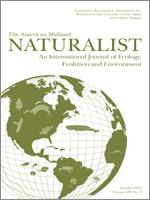Human development is changing the landscape in many ways that affect the distribution of wild species of mammals. Most previous work has focused on birds with only a few studies that examine the effects of urbanization on mammalian species. Using a combination of live trapping, track plates, and observation, we collected preliminary data in which we quantified patterns of species distributions across a rural-urban gradient in southwestern Ohio. Individual species responded differently to aspects of human development. As seen in some previous avian but not mammalian studies, mammalian species richness was greatest at intermediate levels of development. Using cluster analysis, we were able to group sites into three types based on species richness: the most rural sites, those with a moderate degree of development, and the most urban site. This study shows that mammals respond to urbanization in similar ways to birds and butterflies and suggests that different variables may be necessary to explain the observed patterns.
How to translate text using browser tools
1 October 2012
Estimating Mammalian Species Diversity across an Urban Gradient
Jennifer G. Riem,
Robert B. Blair,
Derric N. Pennington,
Nancy G. Solomon
ACCESS THE FULL ARTICLE
It is not available for individual sale.
This article is only available to subscribers.
It is not available for individual sale.
It is not available for individual sale.





